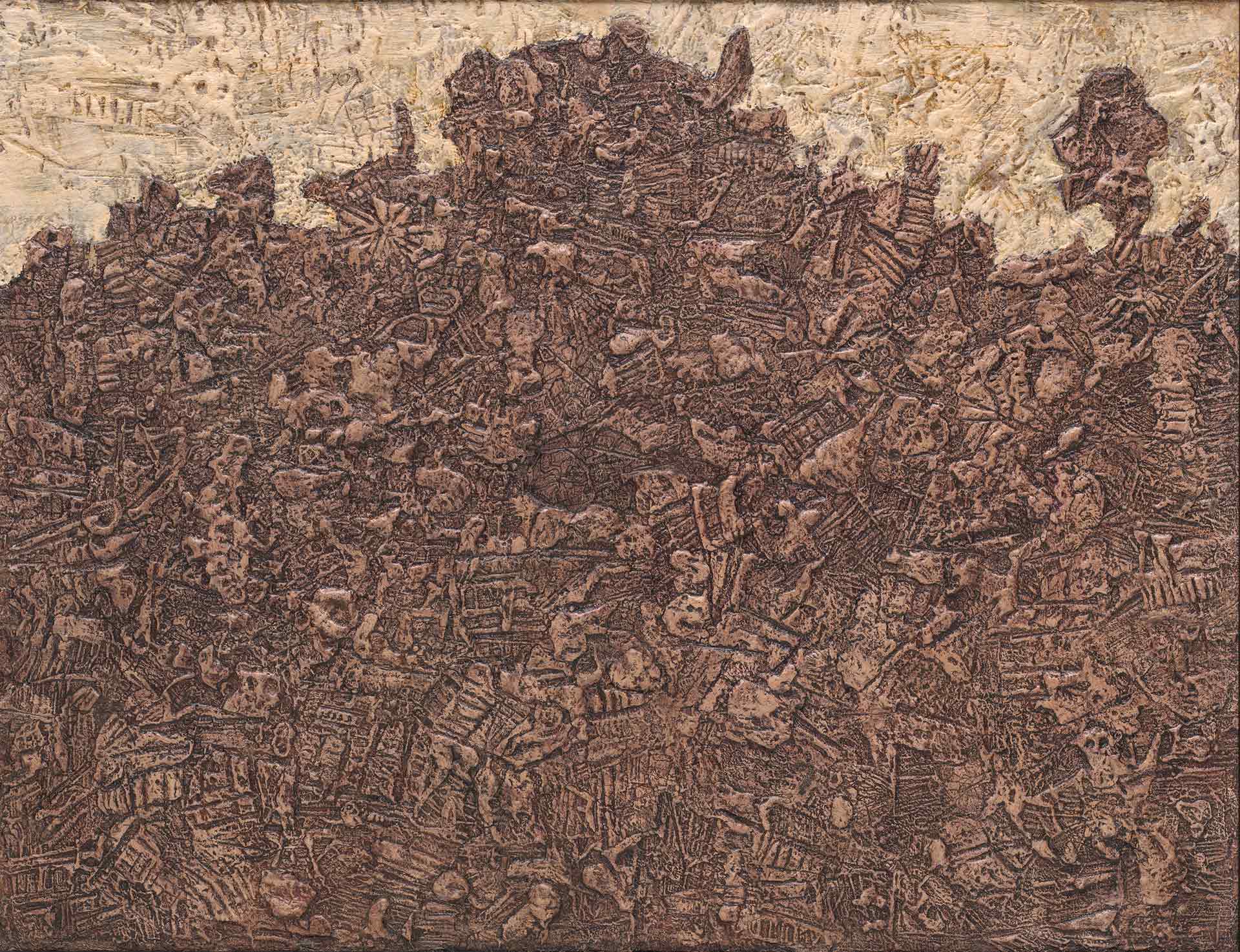The Knoll of Visions (La butte aux visions)
The ambiguous shapes that populate The Knoll of Visions recall geological formations, fossils, or subterranean life, but they never resolve into recognizable objects. The vagueness of these forms suggests the constant state of change that defines the landscape, as substances and beings come into contact and transform, whether through sudden interactions, organic decay, or the slowchurn of geological forces. Dubuffet sought to represent this vitality in his landscapes, rather than follow the tradition of portraying the countryside as picturesque and serene. To him, terrestrial dynamism was not just a fascinating subject. It was also a potent metaphor for the workings of the mind as it interprets the world through perception, memory, and belief.

